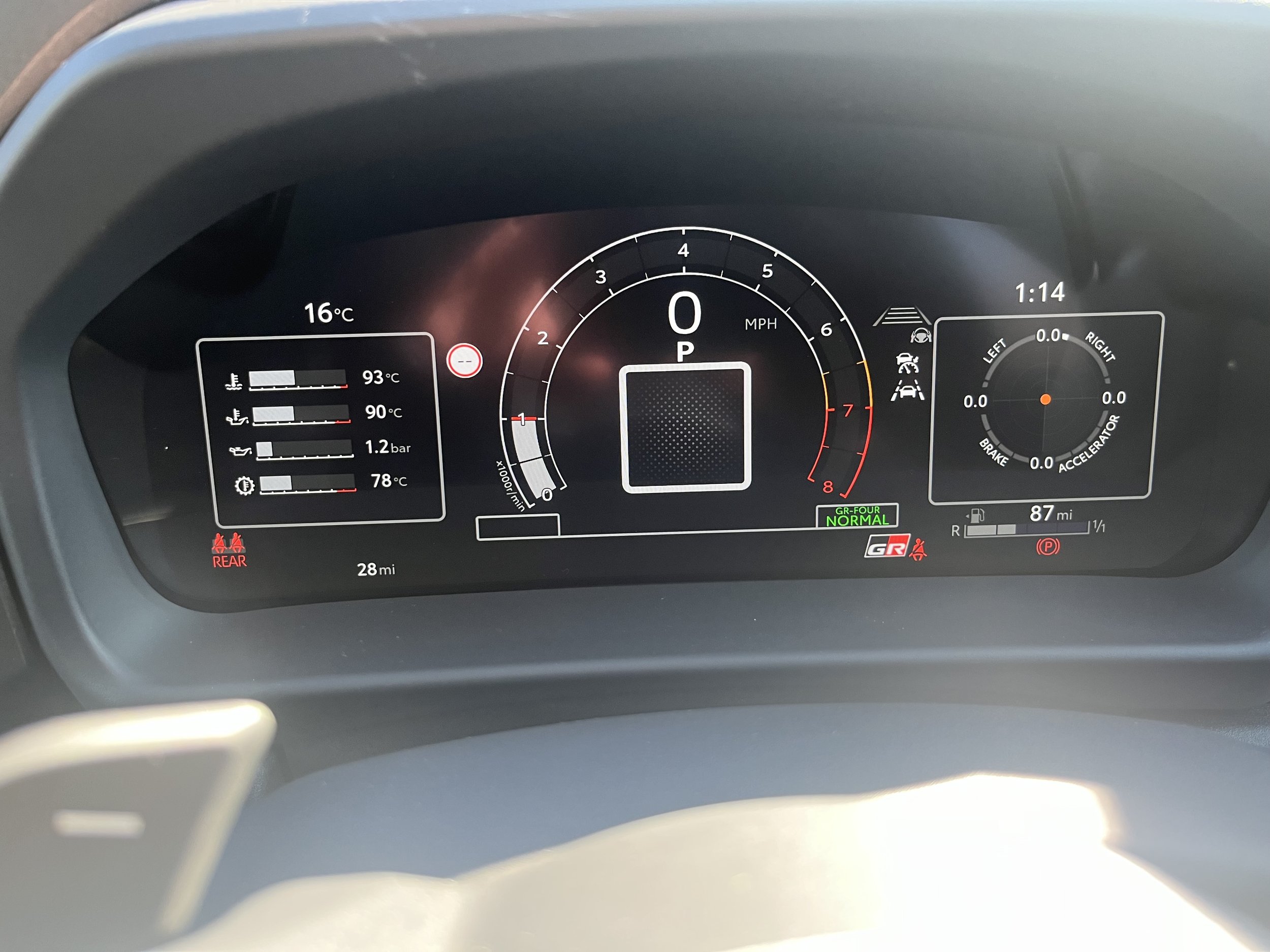












Toyota GR Yaris Circuite 4WD Auto 2025
SPECIFICATION
Precious Metal (Premium Paint)
Engine: 1,618cc three-cylinder, turbocharged
Transmission: six-speed manual, all-wheel drive, this eight-speed automatic
Power (hp): 280@6,500rpm
Torque (lb ft): 288@3,250rpm - 4,000rpm
0-62mph: 5.2 seconds
Top speed: 143mph
Weight: 1,280kg
MPG: 34
CO2: 187.9g/km
After buying a 2021 mk1, I just had to buy this newer improved version. It’s a drivers car. It puts a smile on my face and the world’s a brighter place. Im in love…. Again!
Four years have passed since the Toyota GR Yaris broke the internet (PH forums included) with unprecedented levels of anticipation and hype. All the ingredients of hot hatch greatness were there: an all-wheel-drive chassis homologated for an (unfortunately defunct) ruleset in the World Rally Championship, the most powerful three-cylinder turbo engine to ever appear in a production car and some very tempting finance options had rally fans badgering their local Toyota dealer to get their name on the waiting list. As we all know, the wait was very much worth seeing out.
Step into the present and there’s a new GR Yaris in town. Sure, a facelift is never going to send the intended audience into overdrive quite like the original did, but there’s a comprehensive list of upgrades, tweaks and adjustments that aim to improve many of the bits that did work, and address the handful that didn’t.
For the latter, there’s a refreshed cabin with a dash that sits 50mm lower to rectify the launch car’s letterbox-like view out front and seats that are mounted 25mm closer to the ground to combat the old model’s lofty driving position. Analogue dials make way for a digital dashboard because, says Toyota chairman Akiyo ‘Morizo’ Toyoda, it’s what the WRC cars use, and it’s mounted in a new (and very blocky) housing that’s designed to put all the controls within the driver’s reach.
Of course, everything that made the original brilliant remains. ‘If it ain’t broke, don’t fix it’, so it goes, but Toyota encouraged its engineers and test drivers to break the car (not deliberately obviously) so it would know where improvements are required. That includes revisions to the 1.6-litre turbocharged motor (lighter pistons and tougher valvetrain) alongside a cooling package with a new sub-radiator and intercooler spray resulting from lessons learned in rallying. The same goes for the reworked styling, with the front bumper now split into three smaller pieces to make it easier and cheaper to replace after dinging it on a special stage.
It’s tougher, too. The amount of bonding adhesive and spot welds have been upped by 24 per cent and 13 per cent respectively, and the suspension struts are now mounted with three pins instead of one to maintain geometry under load. Crucially, though, the spring rates have increased all round to keep a lid on body control.
SPECIFICATION
Precious Metal (Premium Paint)
Engine: 1,618cc three-cylinder, turbocharged
Transmission: six-speed manual, all-wheel drive, this eight-speed automatic
Power (hp): 280@6,500rpm
Torque (lb ft): 288@3,250rpm - 4,000rpm
0-62mph: 5.2 seconds
Top speed: 143mph
Weight: 1,280kg
MPG: 34
CO2: 187.9g/km
After buying a 2021 mk1, I just had to buy this newer improved version. It’s a drivers car. It puts a smile on my face and the world’s a brighter place. Im in love…. Again!
Four years have passed since the Toyota GR Yaris broke the internet (PH forums included) with unprecedented levels of anticipation and hype. All the ingredients of hot hatch greatness were there: an all-wheel-drive chassis homologated for an (unfortunately defunct) ruleset in the World Rally Championship, the most powerful three-cylinder turbo engine to ever appear in a production car and some very tempting finance options had rally fans badgering their local Toyota dealer to get their name on the waiting list. As we all know, the wait was very much worth seeing out.
Step into the present and there’s a new GR Yaris in town. Sure, a facelift is never going to send the intended audience into overdrive quite like the original did, but there’s a comprehensive list of upgrades, tweaks and adjustments that aim to improve many of the bits that did work, and address the handful that didn’t.
For the latter, there’s a refreshed cabin with a dash that sits 50mm lower to rectify the launch car’s letterbox-like view out front and seats that are mounted 25mm closer to the ground to combat the old model’s lofty driving position. Analogue dials make way for a digital dashboard because, says Toyota chairman Akiyo ‘Morizo’ Toyoda, it’s what the WRC cars use, and it’s mounted in a new (and very blocky) housing that’s designed to put all the controls within the driver’s reach.
Of course, everything that made the original brilliant remains. ‘If it ain’t broke, don’t fix it’, so it goes, but Toyota encouraged its engineers and test drivers to break the car (not deliberately obviously) so it would know where improvements are required. That includes revisions to the 1.6-litre turbocharged motor (lighter pistons and tougher valvetrain) alongside a cooling package with a new sub-radiator and intercooler spray resulting from lessons learned in rallying. The same goes for the reworked styling, with the front bumper now split into three smaller pieces to make it easier and cheaper to replace after dinging it on a special stage.
It’s tougher, too. The amount of bonding adhesive and spot welds have been upped by 24 per cent and 13 per cent respectively, and the suspension struts are now mounted with three pins instead of one to maintain geometry under load. Crucially, though, the spring rates have increased all round to keep a lid on body control.